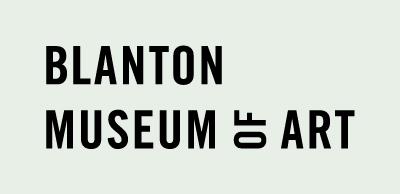Un canto al venado [A Song to the Deer]
Primary
Carlos Mérida
(Guatemala City, Guatemala, 1891–Mexico City, Mexico, 1985)
NationalityGuatemalan, North America
Date1964
MediumOil on paper
DimensionsSheet: 22 1/2 × 30 11/16 in. (57.2 × 78 cm)
Framed: 29 1/4 × 37 3/4 in. (74.3 × 95.9 cm)
Framed: 29 1/4 × 37 3/4 in. (74.3 × 95.9 cm)
Credit LineBlanton Museum of Art, The University of Texas at Austin, Gift of John and Barbara Duncan, G1971.3.32
Keywords
Rights Statement
Collection AreaPrints and Drawings
Object numberG1971.3.32
On View
Not on viewCollection Highlight
Although he is justly counted as one of Mexico’s great artists (despite being born in Guatemala), Carlos Mérida’s work marked a clear move away from the folkloric style popular among the Muralists at the time. After returning from studies in Europe in 1929, Mérida attempted to find a link between ancient American cultures and current European art movements, particularly Cubism and Surrealism. Un canto al venado is a good example of his mature style, using Cubist-like abstract forms to suggest human or animal figures, while maintaining an overall pattern reminiscent of pre-Columbian textiles and carvings. The subject (“song to the deer”) may refer to ancient Mexican traditions such as the Yaqui Deer Dance, yet Mérida’s works are never straightforward illustrations. He always combined his interest in local traditions with the formal lessons he learned in Europe as a young man. His critical approach to Muralism would be very influential on the group of Mexican artists who followed, the “Ruptura [Rupture]” generation.
Exhibitions

![Un canto al venado [A Song to the Deer]](/internal/media/dispatcher/14808/preview)

![Un canto al venado [A Song to the Deer]](/internal/media/dispatcher/14808/full)

![Mecanismo mudable [Mutable Mechanism]](/internal/media/dispatcher/23941/thumbnail)
![El angel en el céfiro [The Angel in the Zephyr]](/internal/media/dispatcher/20116/thumbnail)
![Tres figuras [Three Figures]](/internal/media/dispatcher/15219/thumbnail)

![Estudio para Mecanismo mudable [Study for Mutable Mechanism]](/internal/media/dispatcher/23943/thumbnail)





